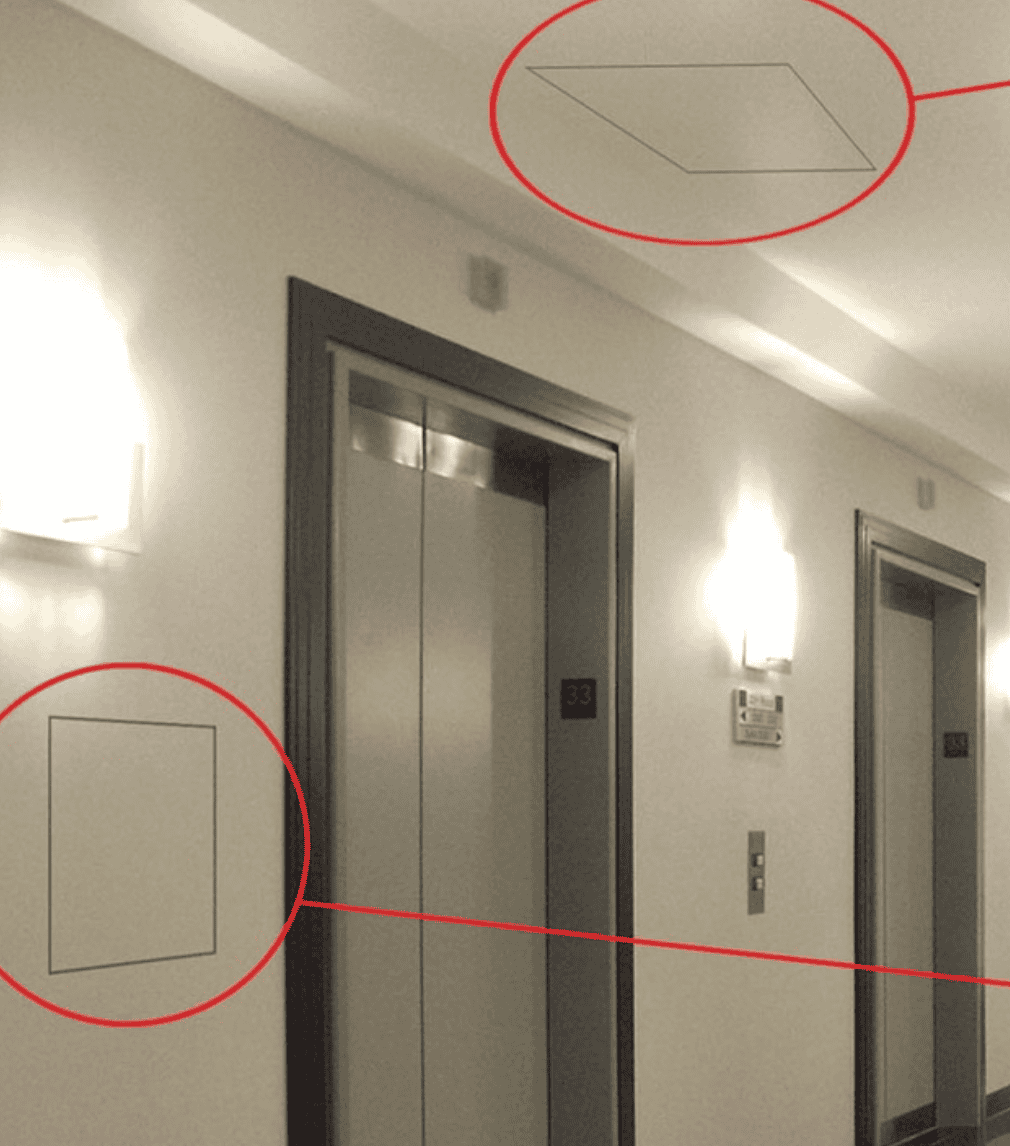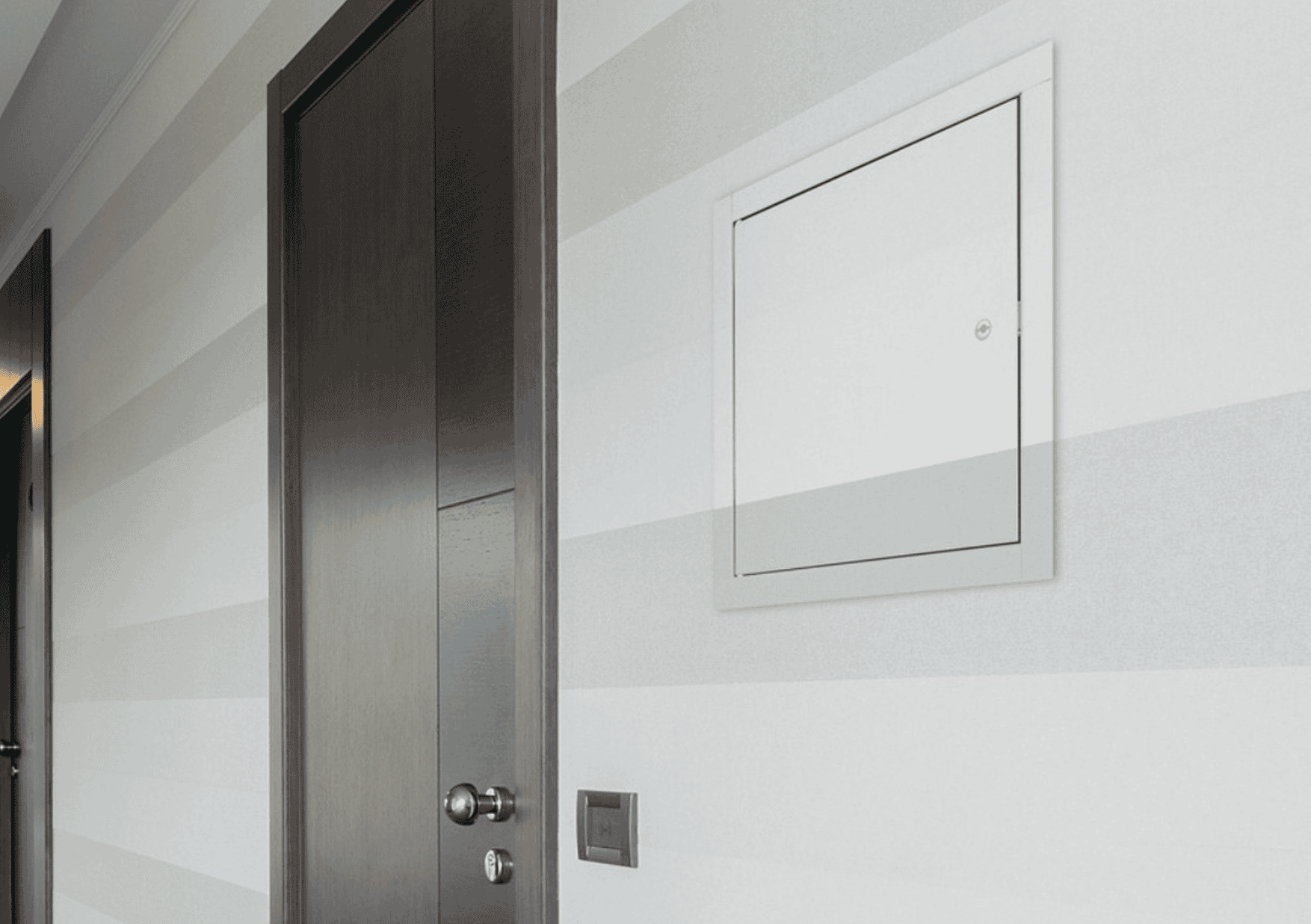Posted by Spycor LLC on Nov 14th 2025

Every building—whether commercial, industrial, or residential—relies on hidden infrastructure: plumbing, electrical wiring, HVAC components, and vital shut-off valves. These systems require regular maintenance and emergency access. A building’s compliance and long-term efficiency hinge on choosing the right cover for these crucial access points. When quality, code compliance, and reliable performance are the requirements, the simple choice is Acudor Access Doors.
This guide simplifies the complex process of access door specification, ensuring you select the perfect access door that meets your functional, safety, and aesthetic needs, positioning you to purchase the precise model your project requires.
1. Step 1: Defining the Purpose of Your
Access Door (Why Do You Need Access?)
The first and most critical step in selection is defining the door's purpose. The required function dictates the material, latch type, and safety rating. Acudor organizes its extensive product line to address these specific needs, ensuring you always select the best access doors for the job.
General Maintenance and Utility Access (The Universal Solution)
Most access doors fall into this category. They are needed to conceal and provide entry to low-voltage wiring, cable connections, plumbing traps, or simple valves.
- Key Requirement: Ease of opening and simple concealment.
- Acudor Solution: Universal flush models (like the UF-5000 series) made from durable steel or aluminum. These doors feature concealed hinges and a flush fit, perfect for blending into the surrounding wall or ceiling. They often come with a simple screwdriver or cam latch.
Fire-Rated Safety Access (Compliance and Protection)
If the wall or ceiling assembly is fire-rated, the access door installed within it must carry the same rating to prevent the spread of fire and heat. Compromising this integrity is a major code violation.
- Key Requirement: UL or ULC certification for wall and/or ceiling application, self-closing mechanism, and insulation.
- Acudor Solution: Fire-rated models (e.g., FW-5050 for walls). These acudor access doors are heavy-duty, insulated, and equipped with an internal spring mechanism to ensure they latch and close automatically after use, fulfilling mandatory safety standards.
High-Security and Tamper Resistance
Areas requiring restricted access—such as correctional facilities, server rooms, or secured institutional spaces—need doors that resist forced entry and vandalism.
- Key Requirement: Heavy-gauge steel construction (10 or 12 gauge), reinforced frames, and high-security locking systems.
- Acudor Solution: Detention or Security models (e.g., SD-6000). These feature heavy-duty piano hinges, reinforced door panels, and high-security options like paracentric key locks, making them some of the best access doors for physical security.
Aesthetic and Concealed Access
In architectural spaces where the wall finish is paramount (e.g., lobbies, bathrooms, or high-end residential), the access door must become virtually invisible.
- Key Requirement: A frame designed to accept the wall material (drywall, tile, plaster) directly onto the door panel.
- Acudor Solution: Drywall Inlay and Recessed models (e.g., DW-5058). The door panel is recessed to accommodate 1/2" or 5/8" drywall, allowing it to be finished, painted, or tiled over seamlessly.

2. Step 2: Location and Material Selection
(Wall, Ceiling, or Exterior?)
The environment and installation location determine the best material to prevent corrosion, wear, and structural issues.
Wall Installations (Interior)
Most access doors are installed in vertical walls. Here, standard steel is the most common and cost-effective material. It is durable, easily paintable, and readily available in the heavy gauges required for fire ratings.
Ceiling Installations
Access panels installed in ceilings must be lighter for safe operation and often require specialized safety latches to prevent accidental opening. Aluminum is often preferred for lighter, non-rated ceiling applications. For fire-rated ceilings, specific testing is required, and only ceiling-approved Acudor access doors should be used.
Exterior and Moisture-Prone Areas
For exterior applications, pool areas, laboratories, or food service facilities, corrosion resistance is paramount.
- Stainless Steel (Type 304 or 316): This is the definitive material choice for high-moisture or corrosive environments. Stainless steel acudor access doors resist rust and chemical breakdown, guaranteeing longevity in harsh conditions.
- Gasketing: Exterior and interior moisture-controlled areas often require an Airtight/Watertight (ADWT) model. These doors feature perimeter gasketing (EPDM rubber or neoprene) to create a perfect seal, preventing the ingress of water or air/vapor leakage.
3. Step 3: Deciphering Safety and
Compliance (Fire, Ratings, and
Dimensions)
The complexity of choosing the best access doors often revolves around code compliance. Acudor simplifies this with clear, independently certified ratings.
Understanding Fire Ratings
A fire-rated access door is not just a metal box; it is an engineered barrier designed to restrict the passage of flames and, in some cases, heat.
- UL/ULC Certification: Always look for the sticker. Acudor doors carry the necessary Underwriters Laboratories (UL) or Underwriters Laboratories of Canada (ULC) certifications.
- "B" Label (1-1/2 Hour Rating): This is the most common rating for vertical walls. It means the door is tested to withstand fire for 1.5 hours in a wall that may be rated for 2 hours.
- Temperature Rise: Some fire codes require "temperature rise" ratings, meaning the door must also limit the temperature increase on the unexposed side (the side opposite the fire). Fire-rated Acudor access doors like the FW-5050 series are insulated to meet this crucial requirement.
Security Levels and Latching
The locking mechanism defines the door's security.
- Standard: Screwdriver-operated cam latch (basic utility access).
- Medium Security: Cylinder lock (key lock), often flush-mounted for a clean look, or Allen-head security latches (requires a special tool).
- High Security: Detention locks and heavy 10-gauge steel, designed for maximum forced-entry resistance.
Sizing and Installation Fit
Acudor offers standard industry sizing, but custom sizes are frequently needed to match existing openings or specific equipment requirements. Remember this key rule:
Acudor offers standard industry sizing, but custom sizes are frequently needed to match existing openings or specific equipment requirements. Remember this key rule:
The rough opening in the wall must be larger than the door size to allow the frame to fit properly. Acudor typically recommends adding $3/8$ to $5/8$ inch to the width and height of the nominal door size for the rough opening measurement.
4. Installation and Long-Term Value of
Acudor Access Doors
The final, and most rewarding, step is installation. Choosing Acudor simplifies this process, as their frames are designed to be self-flashing and easy to integrate into various wall materials, whether it's concrete, masonry, or drywall.
- Ease of Install: Acudor frames come pre-punched with mounting holes, allowing the installer to quickly secure the door into the rough opening. For flush-mounted doors, the frame flange covers the cut edge of the wall material, providing a neat, finished appearance without extensive trimming.
- Longevity: Investing in high-quality Acudor access doors means less maintenance down the road. The superior hinges, durable powder-coat finishes, and certified gasketing resist wear and tear, ensuring that the access point remains functional and safe for the entire lifespan of the building. This long-term reliability is why they are consistently considered the best access doors by contractors.
Ultimately, an access door is a crucial part of a building’s infrastructure, not an afterthought. By defining the purpose, location, and required ratings, you can confidently select the exact acudor access doors needed, ensuring regulatory compliance and lasting performance.
Order Now the best Acudor Access Doors to ensure your next project meets the highest standards for safety, compliance, and professional finishing.

Frequently Asked Questions (FAQ)
Can I install a regular access door in a fire-rated wall?
No. You must always install a specifically certified fire-rated access door (like the Acudor FW-5050) that carries the proper UL or ULC rating to maintain the integrity of the fire barrier.
How do I make the access door disappear?
Use an Acudor Drywall Inlay or Recessed model (e.g., DW-5058). These doors have a recessed pan that accepts wall material, allowing you to finish and paint the door panel to match the surrounding wall seamlessly.
What does it mean if an access door is "gasketed?"
It depends on the application. For simple utility access in a non-secured hallway, a screwdriver cam latch is sufficient. For areas that must be locked to prevent unauthorized entry, a cylinder key lock option is highly recommended.
Is an aluminum access door better than steel?
They serve different purposes. Steel is necessary for fire-rated and high-security applications due to its strength. Aluminum is lighter and corrosion-resistant, making it a good choice for light-duty access in non-rated ceilings or certain exterior applications.



